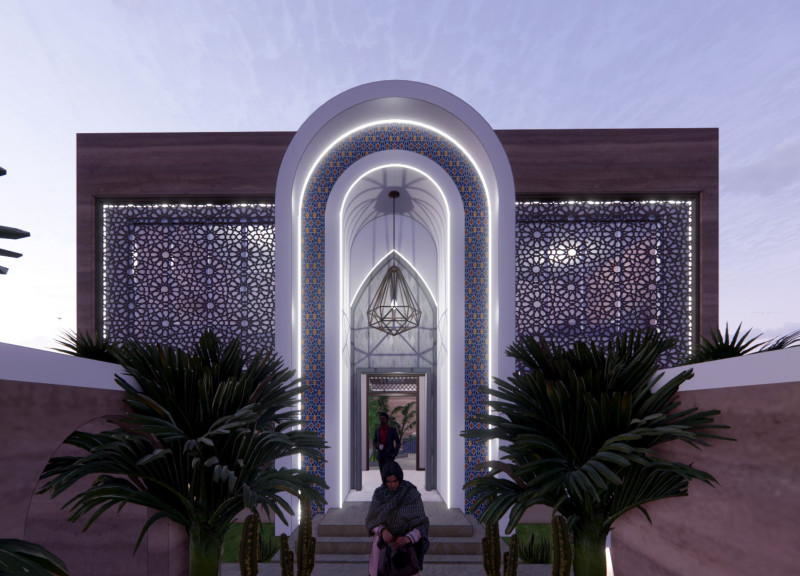5 key facts about this project
The project is characterized by a meticulously designed facade that balances transparency and solidity. By utilizing extensive glass panels, the building fosters a connection between interior spaces and the surrounding landscape, inviting natural light to permeate and enhance the ambience within. This choice reflects the emerging trend in architecture that prioritizes well-being and environmental engagement. Complemented by strategically placed solid walls, the design ensures privacy and acoustic comfort while maintaining a sense of openness in public areas.
As part of its design, the project incorporates various materials, each selected for their functional properties and contribution to the overall aesthetic. Concrete provides the structural integrity necessary for its form, while warm wood accents throughout create inviting and tactile surfaces that foster comfort. The thoughtful application of materials continues with the use of steel in critical support systems, enhancing the project's modern appeal. Additionally, natural stone elements not only ground the design in its locale but also provide a robust texture that contrasts elegantly with smoother finishes.
The spatial organization is particularly noteworthy, enabling a fluid transition between different areas. Various zones are delineated for both collaborative and solitary activities, promoting a versatile atmosphere suitable for various uses. Such a layout prioritizes the user experience, encouraging interaction while also offering retreat spaces tailored for privacy and personal reflection.
One of the unique design approaches highlights sustainability as a core principle. The project incorporates environmentally conscious technologies, including solar energy systems, rainwater harvesting solutions, and passive heating and cooling strategies. These elements not only reduce the building's carbon footprint but also educate occupants about sustainable living, aligning with a broader trend in architectural design aimed at fostering ecological responsibility.
Furthermore, the incorporation of local cultural motifs and historical references enriches the design narrative, providing a sense of place that resonates with potential users and the surrounding community. This thoughtful integration of cultural elements serves not merely as decoration but as a dialogue with the past, reminding users of the rich history that informs their environment.
In addition to these aspects, the project demonstrates an innovative approach to circulation and accessibility. Thoughtful attention has been given to ensure that all areas are easily navigable, accommodating individuals of varying mobility levels. This inclusivity underscores a commitment to social interaction, allowing the space to cater to a diverse audience.
The architectural design represents a synthesis of thoughtful engagement with its surroundings, user-oriented functionality, and a clear commitment to sustainability and cultural context. For readers interested in a deeper understanding of this project, exploring the architectural plans, design sections, and detailed architectural ideas will provide further insight into how these elements cohesively interact to create a meaningful built environment. This exploration will illustrate not only the visual aesthetics but also the underlying principles that inform the design decisions and elevate the project within contemporary architectural practice.


























